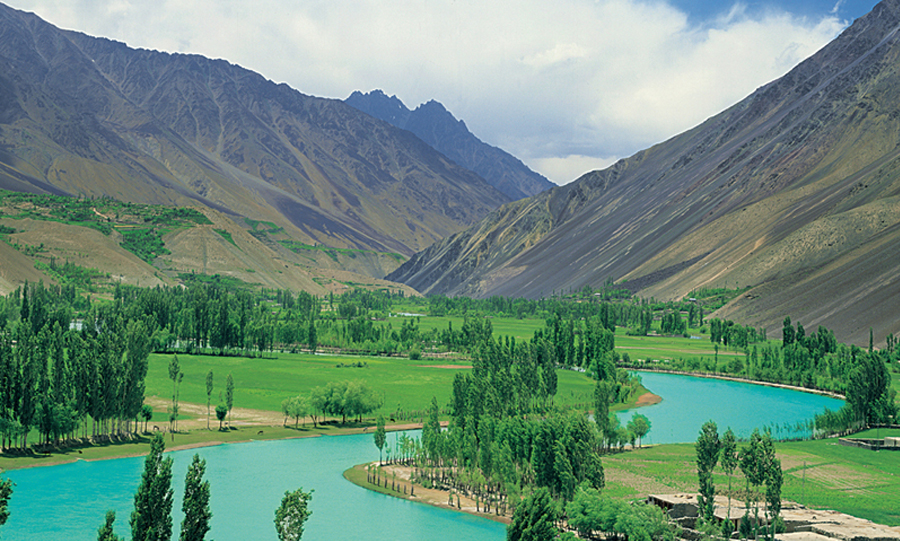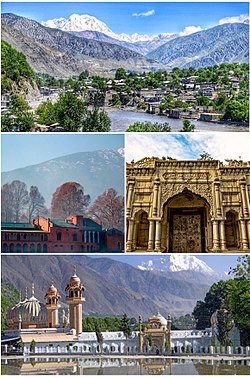Visit to a fairy land

Chitral Valley is the most beautiful place in the north of Pakistan to visit. Chitral is both a historical city and a tourist hub. Going there was like a dream come true.
The journey kicked off on a cold September morning. My friends and I had just finished loading up the car for a week-long trip to the Hindukush. We could not wait to get to the place and we knew it was going to be a memorable week.
There is a saying in the Chitrali language:
If you have not seen Chitral, you have not seen the world.
After a long journey we were finally in Chitral. When we got to the hotel’s parking lot it was practically empty. Maybe that was because we are about 45 minutes early. When I stepped out of the car and felt the cold air hit my face, I felt right at home. I took a deep breath and put my boots, goggles, jacket and gloves on. We were visiting at an Ideal time – the last week of June.
I felt extremely excited: it was like floating in the clouds or sliding down a mountain of marshmallows. The wind was just absolutely divine. The whole week we constantly pushed ourselves to our limits, trying new tricks that we did never before.
Every time we drive up to Chitral, I amazed at how beautiful it is. Summers are generally pleasant but the winters are extremely cold. Chitral is unpredictable during spring with frequent rains and snowfall. Autumn is pleasant with mild temperatures.
Chitral is the capital of Chitral district, situated on the western bank of Chitral (Kunar) river, at the foot of Tirich Mir, the highest peak of the Hindukush range. Chitral district is bounded on the north, south and west by Afghanistan and it is separated from Tajikistan by a narrow strip of land called Wakhan, a province of Afghanistan.
It’s absolutely breathtaking and it always makes me feel carefree and relaxed, the perfect place for a vacation. A few minutes before we actually arrive at the mountain there’s clearing that we drive through and see all the way to the top of the mountains.
This 322-km long mountain hideout nestling high in the Hindukush range, is a place of fascinating scenic beauty and grandeur. Chitral is a collection of rugged mountains, hot water springs, rivers teeming with trout, orchid dotted with slopes, friendly people and annual festivals enchanting beyond description. For the modern day traveler, the place offers an unforgettable experience.
From ancient times, Chitral was an important point on a trade route from ancient Northern Afghanistan and China to the plains of Gandhara in northern Pakistan. Chitral was a Buddhist country before the coming of Islam.
Alexander of Greece marched through the Chitral valley and left behind traces of Greek heritage, which can still be seen. A legend says that some soldiers from the legions of the Macedonian conqueror settled in Chitral and are the progenitors of Kalash.
The people live simple lives. A non-Muslin ethnic minority known as Kafir Kalash is a prominent feature of the valley. Their lifestyle is characterized by their own ancient and religious rites and customs. Urdu is understood by a large number of people while Pushtoo is widely spoken.
Women wear shalwar kameez, long shirts with baggy trousers and dupatta, flimsy scarfs wrapped around the shoulders. Men wear shuq, loose woollen gowns with long sleeves.
The Kalash men distinguish themselves from the non-Kalash by wearing special woollen hats to which they add feathers. They also wear long o belts and their shoes are often made of goat skin, usually rigged directly to the feet and laced with woollen or leathers thongs. The Kalash women wear black gowns of coarse cotton in summer and handspun wool dyed black in winter: they also wear a picturesque head gear made of woollen material encrusted with cowry shells, button and crown with a large colored feather.

The picturesque Chitral town lies on the Chitral River. Worth seeing is the Shahi Masjid (grand mosque) against the backdrop of Tirich Mir peak. Also worth exploring is the fascinating bazaar which offers a host of hand crafted treasures. Chitral is also famous for its polo tournaments held in April and September.
People live in small villages on the hillsides near banks of streams. Houses are built from rough-hewn logs and are double-storey because of the steepness of the slopes.
The Kalash love music and their instruments are drums and flutes; their colorful dances impart a feeling of peace, joy and contentment. Visitors join in their fabulous dance which is interpreted as a sign of friendship.
There is a saying in the Chitrali language: if you have not seen Chitral, you have not seen the world. Only by visiting Chitral can you discover the truth behind the saying.
